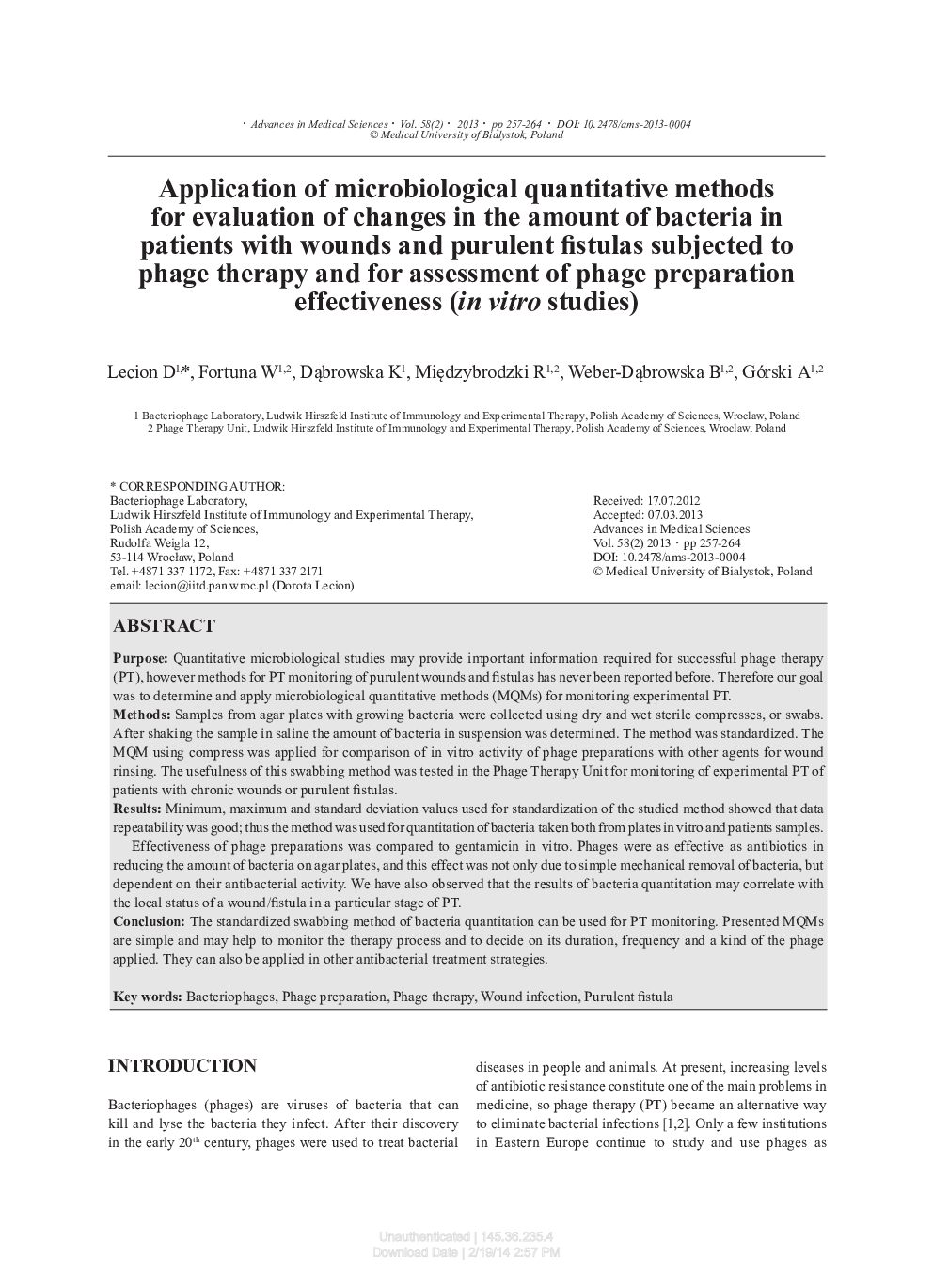| کد مقاله | کد نشریه | سال انتشار | مقاله انگلیسی | نسخه تمام متن |
|---|---|---|---|---|
| 2031902 | 1071635 | 2013 | 8 صفحه PDF | دانلود رایگان |

ABSTRACTPurposeQuantitative microbiological studies may provide important information required for successful phage therapy (PT), however methods for PT monitoring of purulent wounds and fistulas has never been reported before. Therefore our goal was to determine and apply microbiological quantitative methods (MQMs) for monitoring experimental PT.MethodsSamples from agar plates with growing bacteria were collected using dry and wet sterile compresses, or swabs. After shaking the sample in saline the amount of bacteria in suspension was determined. The method was standardized. The MQM using compress was applied for comparison of in vitro activity of phage preparations with other agents for wound rinsing. The usefulness of this swabbing method was tested in the Phage Therapy Unit for monitoring of experimental PT of patients with chronic wounds or purulent fistulas.ResultsMinimum, maximum and standard deviation values used for standardization of the studied method showed that data repeatability was good; thus the method was used for quantitation of bacteria taken both from plates in vitro and patients samples.Effectiveness of phage preparations was compared to gentamicin in vitro. Phages were as effective as antibiotics in reducing the amount of bacteria on agar plates, and this effect was not only due to simple mechanical removal of bacteria, but dependent on their antibacterial activity. We have also observed that the results of bacteria quantitation may correlate with the local status of a wound/fistula in a particular stage of PT.ConclusionThe standardized swabbing method of bacteria quantitation can be used for PT monitoring. Presented MQMs are simple and may help to monitor the therapy process and to decide on its duration, frequency and a kind of the phage applied. They can also be applied in other antibacterial treatment strategies.
Journal: Advances in Medical Sciences - Volume 58, Issue 2, December 2013, Pages 257–264